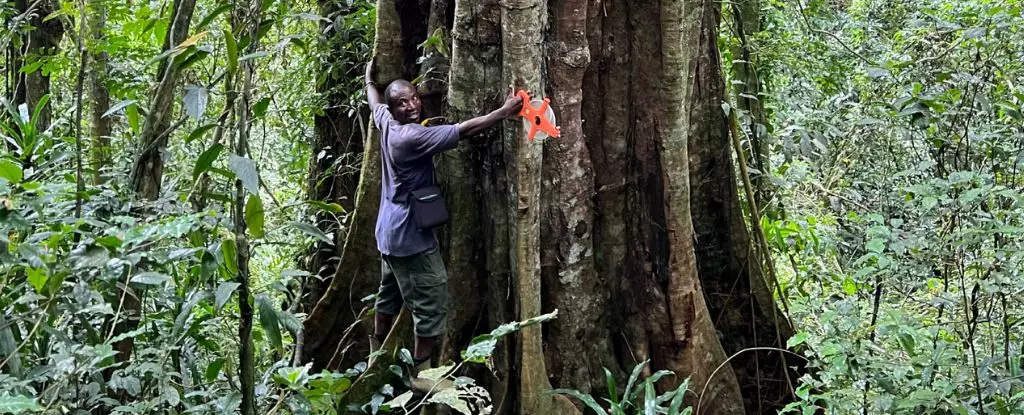Nestled in a secluded expanse of Tanzania’s Udzungwa mountains lies a remarkable botanical discovery: the Tessmannia princeps. This newly identified species of old-growth tree has captured the attention of scientists and conservationists alike. With an impressive height of 40 meters (130 feet) and an estimated lifespan of up to 3,000 years, it is a sight to behold. However, beneath the surface of this magnificent tree lurks a precarious fate fraught with danger.
The journey to discovery began in 2019 when botanist Andrea Bianchi, accompanied by local plant experts Aloyce and Ruben Mwakisoma, ventured into the tropical rainforests for a routine survey. Instead of encountering familiar flora, they stumbled upon the striking T. princeps, distinguished by its magnificent stature and unique features. Its light-brown bark and brown-haired leaves painted a portrait of a being that defies time, yet it is a bittersweet testament to the fragility of the remaining wild spaces on our planet.
Unique, Yet Vulnerable
Tessmannia princeps stands out not only for its physical characteristics but also for the dire threat it faces. Scientists estimate that only around 1,000 of these trees exist, largely confined to two valleys, Boma La Mzinga Village Land Forest Reserve and the Uluti Village Land Forest Reserve. The historical ramifications of human activity in this region can’t be overlooked; deforestation has ravaged the landscape, limiting the trees’ growth potential and ensuring that their majestic presence is dwindling.
The acknowledgment that the species may be classified as vulnerable paints a bleak picture for T. princeps. As we stand on the brink of a biodiversity crisis, the urgency to protect such unique species grows stronger. An alarming prediction by scientists suggests that a staggering 75 percent of currently unnamed plant species may be facing extinction. To think that something as extraordinary as T. princeps could fall into this statistic is disheartening.
Ecosystem Services and Their Decline
The ecological significance of old-growth trees like T. princeps cannot be overstated. These trees are more than just towering giants; they play vital roles in carbon storage, providing shade, and serving as crucial habitats for a myriad of organisms. Yet in our relentless pursuit of development, we undermine these living monuments. The extinction of trees equates to lost ecosystems, and with them the intricate balance of life that is deeply intertwined with our human existence.
Conservationists have lamented the loss of nearly 4 million hectares of old-growth rainforest in 2018 alone. The reasons behind this tragedy are varied but usually involve clear-cutting for agriculture, logging, or urban expansion. The shrinking of such ecosystems is not only an environmental concern; it also exacerbates social inequalities, particularly in regions where communities rely on forests for their livelihoods. The interplay between human poverty and environmental degradation underscores a grim reality that cannot be ignored.
Conservation Efforts: A Ray of Hope?
Against this backdrop of destruction, there lies a flicker of hope. The restoration projects spearheaded by private companies aim to create a vital green corridor that connects two ancient forests. These initiatives have the potential to uplift impoverished communities while simultaneously safeguarding delicate environments. The reality is, however, convoluted. Can economic development truly coexist with environmental preservation?
It becomes increasingly evident that a holistic approach to conservation is imperative. The plight of Tessmannia princeps serves as a rallying cry for concerted efforts to protect our last surviving botanical wonders. Working with local communities who hold ancestral ties to the land can play a pivotal role in ensuring that conservation strategies are both effective and sustainable.
The struggle to preserve trees like T. princeps reflects larger societal issues—a clash between our immediate needs and the long-term health of our planet. As we grapple with these complexities, the answer is not merely in identifying new species; it requires a profound transformation in how we relate to our natural world. This ancient tree might represent hope—or it might symbolize what we stand to lose if we allow ignorance and greed to dictate our actions. The legacy of Tessmannia princeps, a tree that has stood the test of time, now hinges on our willingness to act decisively while we still can.

Leave a Reply